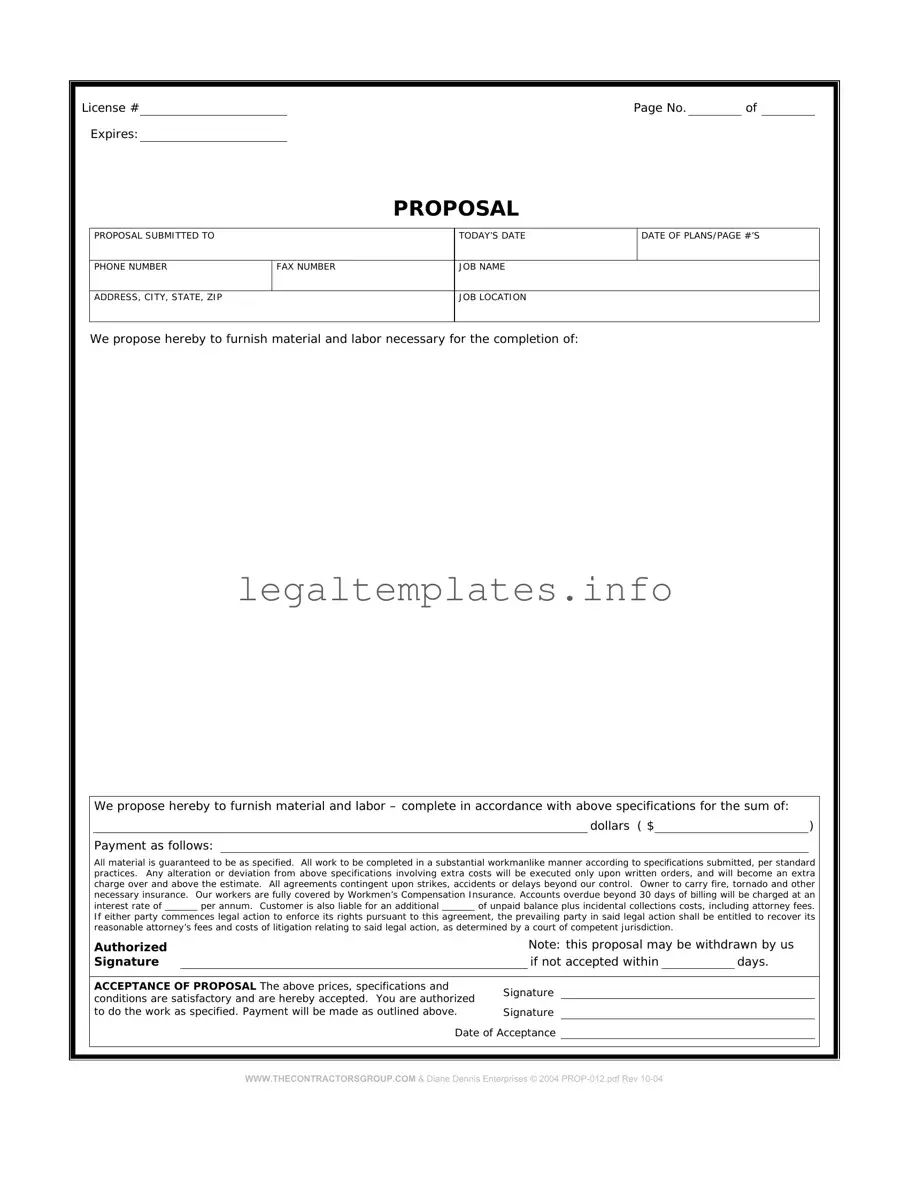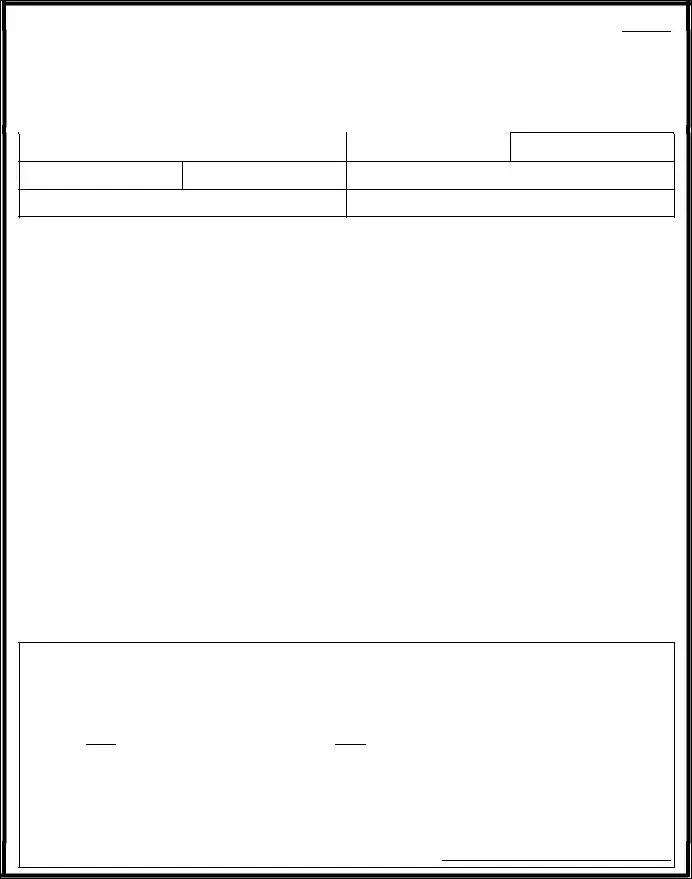The construction proposal form shares similarities with the project charter document. Both serve as foundational tools that outline the scope, objectives, and overall plan for a project. While the construction proposal form focuses primarily on the specifics of a construction project, including cost estimates, timelines, and material requirements, the project charter encompasses a broader overview of a project's goals, stakeholders, and governance, providing a roadmap for project management. Each document, in its context, acts as a compass guiding the project from inception to completion.
Similar in intent, the request for proposal (RFP) document parallels the construction proposal form by soliciting bids for a project, aiming to gather proposals from various contractors or service providers. Both documents describe the project in detail, including specifications and requirements, to inform the bidding process. However, an RFP is typically issued by the project owner to solicit bids from contractors, whereas a construction proposal form is submitted by contractors to bid on specific projects.
The scope of work (SOW) document also bears resemblance to the construction proposal form, as both delineate the work to be performed under a contract. The scope of work outlines the tasks, deliverables, timelines, and work process in detail, similar to how a construction proposal specifies the construction project details. Nevertheless, the construction proposal form is often used as a bidding tool, whereas the scope of work is generally part of the contract documentation, setting clear expectations and deliverables for the project.
Bid documents are akin to the construction proposal form since they also play a crucial role in the bidding process. These documents typically include a variety of forms and requirements that bidders must adhere to, such as qualifications, submission details, and bid bonds, aside from the project specifics outlined in a construction proposal. Essentially, while bid documents provide a comprehensive package for potential bidders, the construction proposal form represents a single component focused on outlining the proposed work and costs.
The work order document, utilized to initiate a specific job or project, shares functionality with the construction proposal form. Both documents specify the work to be done, though the work order is used after a contractor has been selected, often based on a construction proposal. It details the tasks, materials, labor, and costs for the work, serving as an agreement for the job between the contractor and the project owner, much like the proposal outlines the planned work for consideration.
An invoice document, while traditionally used for billing purposes after work is completed, parallels the construction proposal form in listing the costs associated with a project. Invoices provide a detailed account of the services provided, materials used, labor, and total charges, mirroring the cost breakdown found in a construction proposal. The key difference lies in their timing and purpose; invoices seek payment for completed work, whereas construction proposals estimate costs for work yet to be performed.
Additionally, the project schedule document resembles the construction proposal form through its focus on timelines and milestones. Both documents plot out the duration of specific tasks and the overall project timeline. While the construction proposal often includes a preliminary project schedule as part of the bid package, a project schedule document is more detailed and typically used for internal project management purposes to keep the project on track.
Finally, the construction contract document is closely related to the construction proposal form since it formalizes the agreement between the project owner and the contractor. The contract includes many elements proposed in the construction proposal, such as the scope of work, cost, and timeline, but it additionally encompasses terms and conditions, payment schedules, and legal clauses. Essentially, the construction proposal, once accepted, serves as the basis for drafting the comprehensive construction contract.

